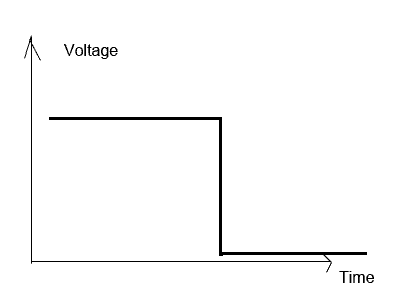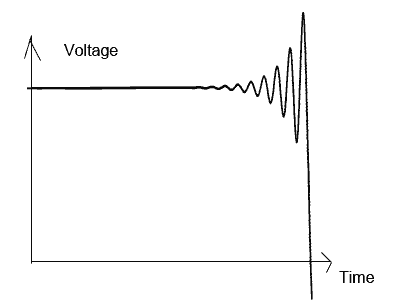One of the hallmarks of science is that it is correct. At least the established science that we learn in school. But history has shown us that this certainly was not always justified.
First of all, this author wants to disclose that he was trained as a scientist and still has the hardest time shedding his scientific mind. The most drastic attempt to accomplish this had been to walk barefoot over glowing coals. The result of that experiment was that, for about half an hour, this scientific mind had been overwhelmed and his feet were OK, but after a short recovery period it kicked in with a vengeance, and the feet developed serious blisters.
Back to the certainty – often culminating in arrogance – of science. Generally, when a new science is developed, the old one could be saved by making it a special case of the new. An example of this is Newton’s laws. After Einstein created his special relativity, Newton’s laws were still – mostly – correct, at least when dealing with speeds that were much lower than the speed of light, which is the case for pretty much everything in our daily experience.
There are cases where even science has to admit that it was wrong. One example that comes to mind was the attempt to explain the sun before nuclear power had been discovered. During this pre-nuclear time scientists, assuming the sun was composed of mostly coal, estimated the remaining time for life on earth to be in the range of a few million years – the time for all the coal to burn up. With the ‘invention’ (not discovery) of nuclear fusion that range has increased tremendously. Today science ascertains that the explanation of the workings of the sun through the fusion of hydrogen is correct. But, to be honest, not very long ago, scientists were just as certain that their coal – explanation was correct as well. The coal theory had no chance of saving face when it was overturned.
Let us look at another example where the certainty of science was not quite justified. Towards the end of the 19th century, science became convinced that the future was fully determined. Based on Laplace’s postulation of a hypothetical, all-powerful being that could know the location and speed of any and all particles in the universe at one time, the location and speed of each of these particles at a later time could be calculated, thus the future could be not only predicted by actually computed. That hypothetical mind was called Laplace’s demon.
This state of science lasted into the beginning of the 20th century even though there were a few observed experiments that were not explainable by this view of the world. It required some obnoxious scientists that were not content with just disregarding those annoying irregularities to break the arrogance of the established sciences. These non-conformists started to investigate a bit deeper and the result was the Heisenberg principle that explains to us that knowing the speed and location of every particle at one point in time was impossible. Heisenberg discovered that if you know the exact location of a (very small) particle you could not measure, and thus know its speed. Similarly, if the speed was known exactly, the location could not be determined.
Laplace’s demon was dead. All the work Laplace did was still valid as long as the objects were big, like planets or cars or marbles, but when dealing with molecules or atoms, physical laws were just different. Similarly, to the effects of the Relativity Theory of Albert Einstein, the old science could be saved because it is – mostly – applied.
Just as today, scientists are very confident that their theories truly describe reality, so were the physicists of 1899 certain that they could compute the future, at least theoretically.
What does all this mean in the context of our research for inner peace and serenity?
Simply not to take that, what science tells us, too seriously.
This author is still enough of a scientist not to throw each and any scientific result into the fiery pit and pull out a magic wand to get his broken computer or car working again, but he also will not discard observable results – even if only by him – just because the established science tells him it could not be so.
If scientists have been wrong in the past, could it be that they are also wrong – or ignorant – today, or is our science today really so good that there is no doubt that it describes the world correctly? If today, some scientists might appear a bit too over-confident then we would expect that there are some observations that do not fit into the current interpretation of the world.
So, we have to ask: Are there such observations?
And indeed, there are!
One of those misfits is (a) the radioactive particle that does not do what it’s supposed to do when being watched, and the other one is (b) the wave that knows the future.
(a) An unstable, radioactive, element has a specific rate of decay and if left alone that element will nicely decay at the rate established by many observers. But if under observation in a petri-dish it will be shy and don’t do its job of decaying at the prescribed rate. This author has to admit that he did not verify these results personally, but the next phenomenon he has seen with his own eyes.
(b) Take an electric circuit and watch the voltage with an oscilloscope. The circuit contains a switch to interrupt the circuit and throwing the switch would just change the voltage from high to low instantly.

In other words, as soon as the switch is turned to the off position, the voltage goes down to zero. But this is not what actually happens. If we zoom into this image just around the moment when the switch is thrown, here is what we really see.

Before the voltage is actually turned off and goes down, there is a little bit of an oscillation happening. But wait – before? How could the circuit know that it will be turned off soon, even if that soon is only nano (or shorter) seconds?
It can’t – at least not with our current explanations of the inner workings of the universe. Causality seems to be broken. Entertain a little thought experiment. You make the decision to turn off the switch, but shortly before you actually do it, the oscillation on the wave starts and right there you change your mind. Would the oscillation now die away just leaving behind the measurement of your brief intention to switch off the power? Or would the oscillation never had happened, thus actually changing the past?
Mind-boggling, isn’t it?
Does this open the door – at least a little bit – to accept that there is the possibility of a behavior of the universe – and the people within it, that is not currently explained by science?
